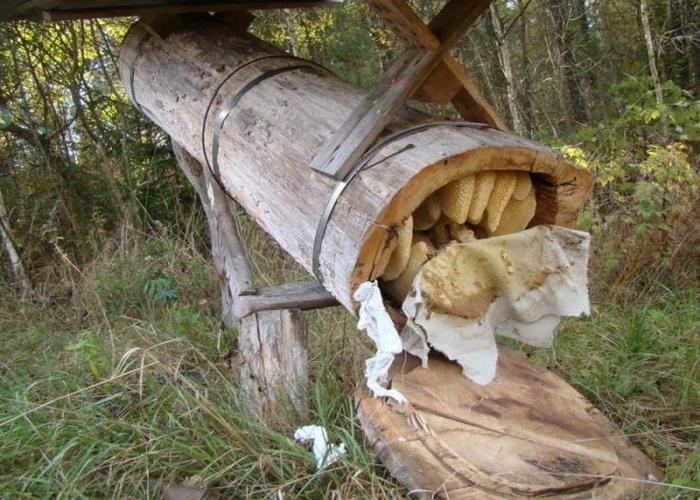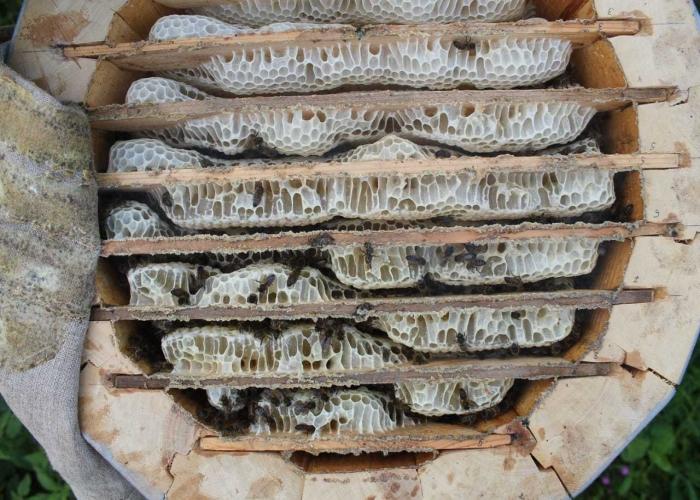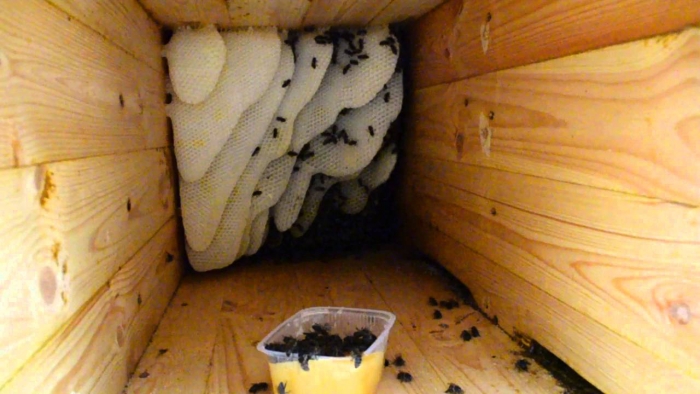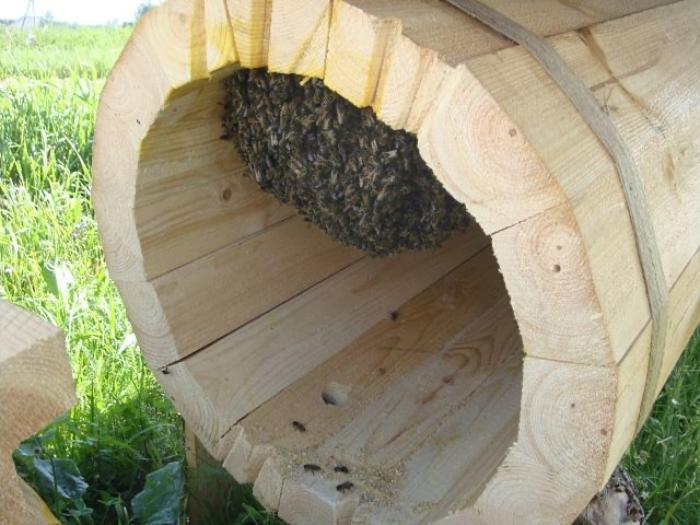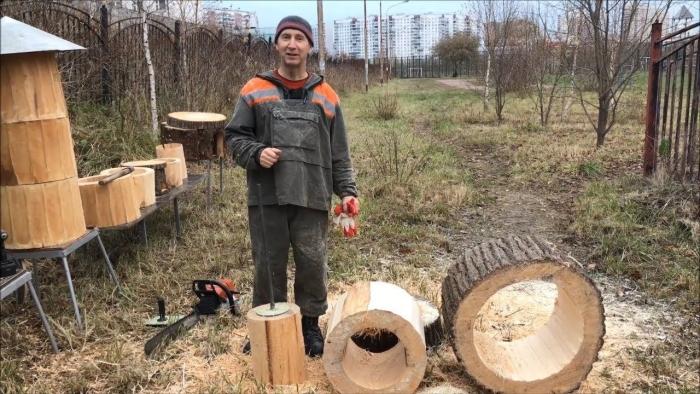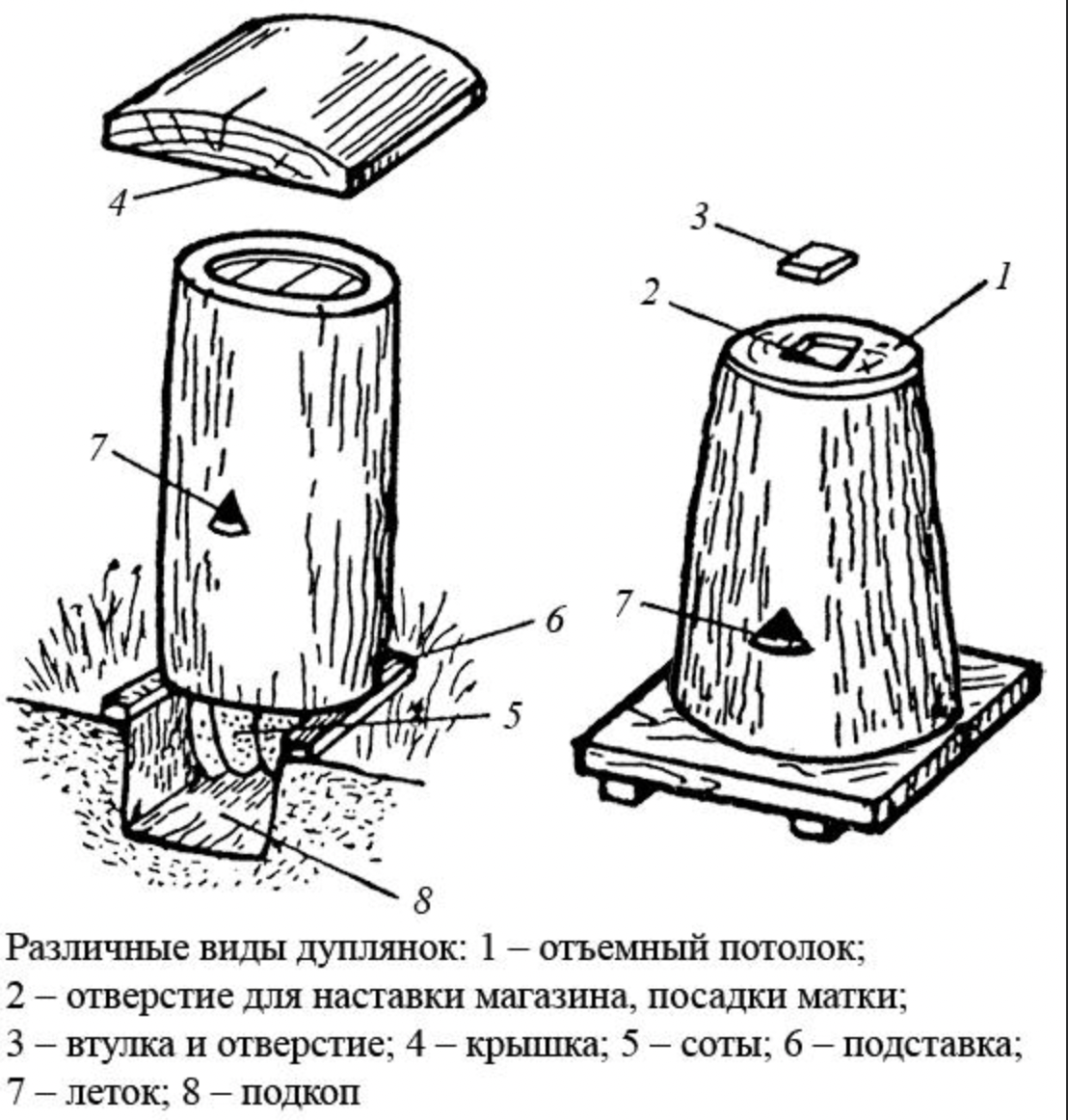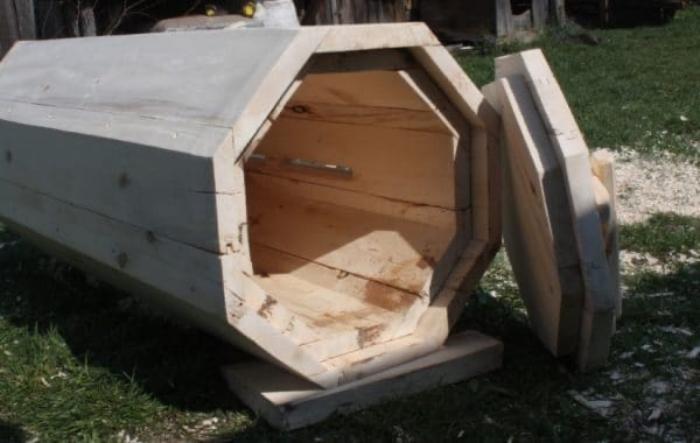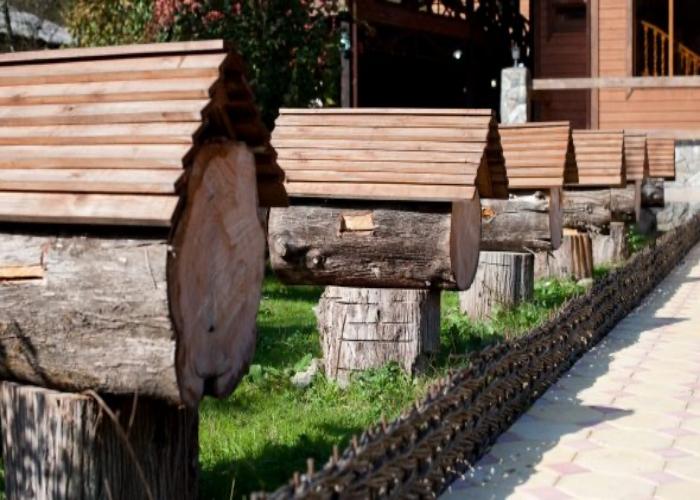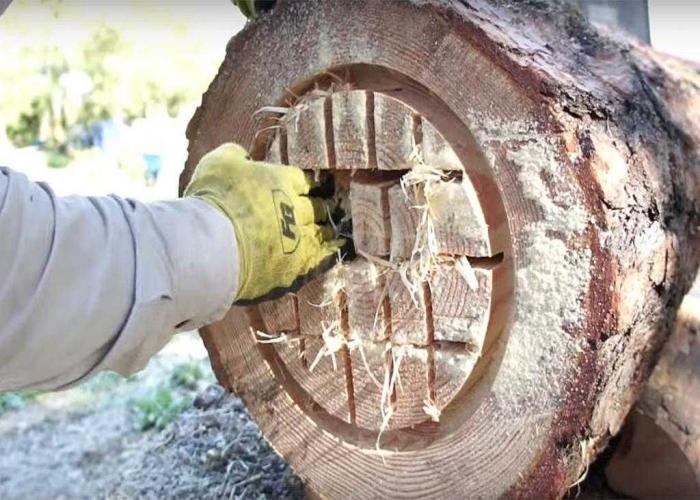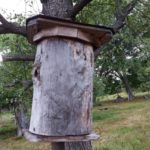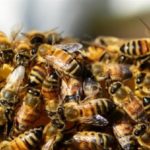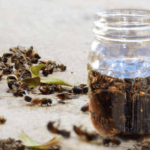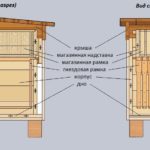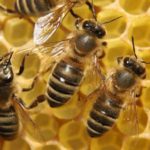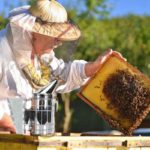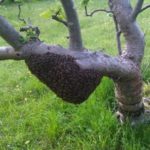Log beekeeping has a very long history. With the advent of hives, the technology fell out of favor, but it was not forgotten. Experienced beekeepers have begun to revive the ancient technology of insect breeding. At the same time, using a bee deck has many advantages. Many beekeepers are confident that this method allows them to obtain the most delicious and healthy honey.
What is log beekeeping?
A bee log is a stationary hive that does not require systematic maintenance by a beekeeper. Log beekeeping cannot be called an innovative method.This method has been practiced for a long time. However, it does not require significant labor costs.
A more modern option is the use of a Combi hive deck. This structure is based on the centuries-old practice of classical insect breeding and modern techniques.
Breeding insects in a hollow hive does not require replacement, collection or extension of frames. With this method, there is no need to move the enclosures or regularly maintain them. This is especially true for beginners. In log hives it is necessary to periodically remove parts of the combs and thereby force the bees to build new ones.
Specifics of keeping bees in decks
Log beekeeping has many distinctive features:
- Decks are considered more durable. With large sizes, even a large bee colony can live in the structure for a long time.
- The deck is considered more comfortable for a swarm to live in compared to a rectangular industrial hive. At the same time, the beekeeper may feel uncomfortable when removing the honeycombs or maintaining cleanliness inside.
- Humans do not take part in the life of bees. The beekeeper only needs to clean the deck from the inside and pull out part of the honeycombs with honey in the fall.
- Bees independently build honeycombs and seal excess holes, and also treat various infections. They place the honeycomb cells as they see fit. After some time, the deck space fills up.
- A person does not need to regularly monitor the life of a bee colony or perform preventive treatments.
Varieties
Decks are divided into several types:
- vertical;
- inclined;
- collapsible multi-level.
Vertical cylinder-shaped structures are more reminiscent of ancient sides. They are made from deciduous tree logs up to 2 meters long. Its size should not be less than 50 centimeters in diameter.With the walls and the middle removed, the structure is made no thinner than 5-7 centimeters. Wooden covers are used on both sides.
A trunk is used to make an inclined bed. It is important that it is thick enough for the bees to live comfortably. If a trunk of the required diameter cannot be found, the deck can be made from boards. In this case, it will have the shape of a right parallelepiped. Such a side should have a slope of up to 30 degrees.
It is also possible to make sections. They should be hollow inside.
Such structural elements are placed on top of each other. After filling the top with honey, it is replaced with a new one. In this case, the lower section must not be emptied. To obtain more honey, it is permissible to install additional frames in each structure.
If the deck is made from a solid trunk, a door will need to be cut into the back surface. It will help clear the structure of clogged honeycombs. Usually the frame is placed directly under the top cover.
Pros and cons of the method
For novice beekeepers, breeding insects in hives is more suitable. However, deck technology also has many advantages:
- Deck hives are characterized by higher environmental cleanliness compared to modern structures. There is no need to use artificial materials or chemicals to kill pests.
- In log hives, bees are not often exposed to smoke and are practically not disturbed. Thanks to this, insects have a calmer character. Log houses can be placed in the yard and not be afraid that bees will attack people.
- Due to the absence of frames, insects are characterized by greater freedom. They fill the deck with honeycombs on their own.Natural housing reduces the likelihood of insect diseases and reduces pomors. In addition, it helps improve the taste of honey and adapt to weather conditions.
- Log beekeeping involves minimal costs. There is no need to buy frames, food or other equipment.
- Log hives do not require omshanik for wintering. Bees can overwinter right outside. At the same time, they themselves create a suitable microclimate in the house.
- Collecting honey in logs causes less harm to bees. Only part of the honeycomb is taken from insects. At the same time, the integrity of their nests is not compromised. Honey remains in the log hive for winter nutrition.
At the same time, the use of a log for breeding bees is characterized by certain disadvantages:
- The deck holds relatively little honey. Bort is more suitable for the comfortable living of a swarm of bees than for making honey.
- The deck is not opened for the entire year after the colony has settled. This is precisely the period of time that insects need to settle in and create reserves for their first wintering.
- There is only a little free space left in the deck to collect honey. At the same time, the honeycombs are difficult to pull out. The speed at which stocks are restored depends entirely on the family.
- The inside walls of the deck are occupied by honeycombs, which fill almost the entire internal space. At the same time, old honeycombs may become clogged, so they will have to be cleaned. It is recommended to do this at least once every 5 years. Bees will not live in a clogged deck. In this case, the swarm will move to another location.
- The board cannot be moved. It is characterized by large size and heavy weight. In addition, there is a risk of breaking the cell walls.
Dimensions and drawing
Before starting construction, it is important to prepare a drawing of the future hive.It requires you to indicate the exact dimensions of the structure. It is recommended to draw carefully, since it is necessary to determine the required dimensions in detail.
Making a deck with your own hands
To make a deck with your own hands, it is recommended to prepare the following:
- a log with a diameter of at least 90 centimeters;
- 2 tree cuts - their thickness should be 6 centimeters;
- cotton fabric;
- electric or gasoline saw;
- loops;
- large chisel;
- nails.
To make a deck for bees, you need to perform the following steps:
- Cut circles from the ends of the log. It is recommended to do this using a cutter. In this case, it is important to retreat a few centimeters from the edge. The notch will act as a guide for cutting out the middle of the trunk.
- Cut the wood and remove it using a chisel. As a result, you need to get a hollow measuring 6 centimeters.
- Make the hollow smooth. To do this, you should use coarse sandpaper.
- Close the holes at the top and bottom with prepared saw cuts.
- Use a drill to drill a tap hole with a diameter of 9 millimeters.
- Coat the inner walls of the deck with propolis, which will attract bees.
- Secure the hive to the tree.
Terms of use
Beginning beekeepers need to learn the rules for using a deck. Before moving bees inside, it is worth installing strips. The interval between them should be the same as between the frames in an ordinary hive.
An important rule for keeping logs is to update the nest. If this is not done, after some time the cells decrease in size. As a result, the bees become small and less productive.
Using a special bee deck has a number of benefits. This insect breeding method produces higher quality and tastier honey.


